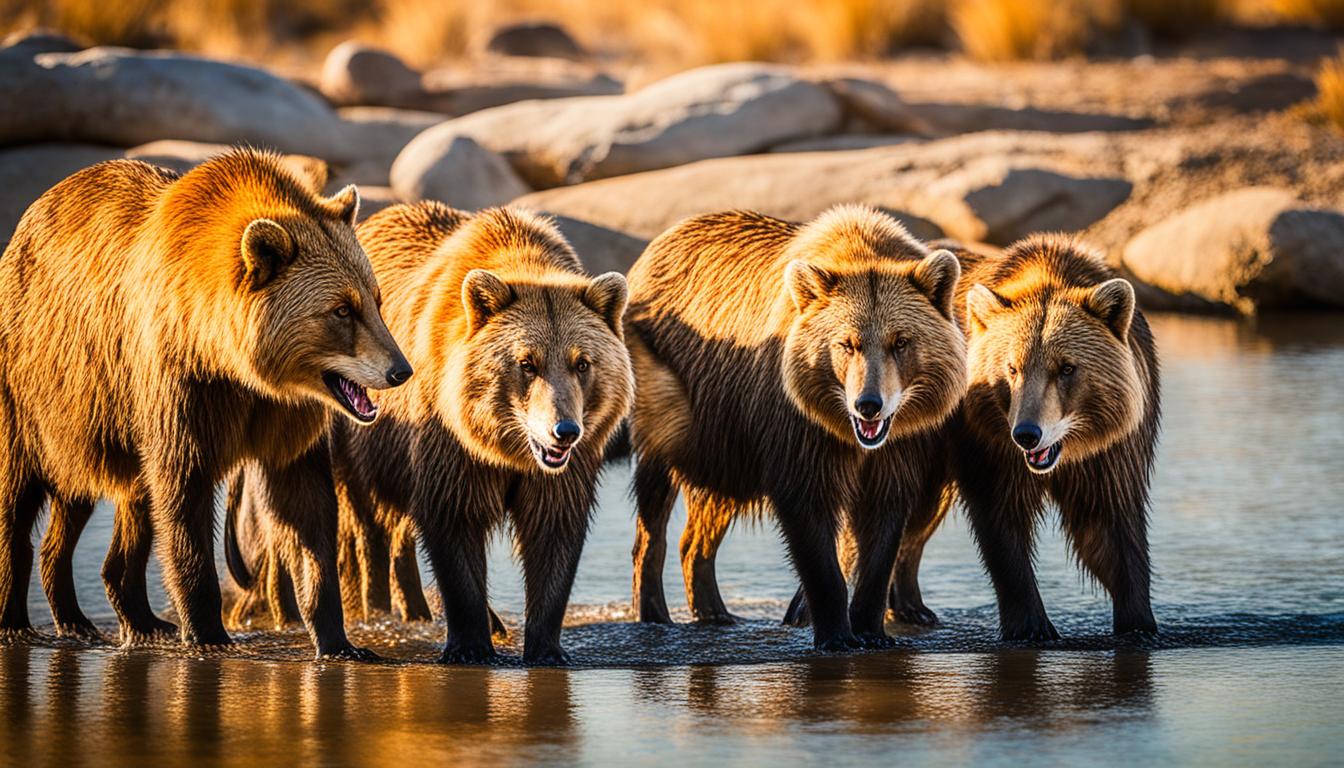Mammals
Mammals come in all shapes and sizes. They live in every part of the world. You can find them in dry deserts, lush jungles, and even in the deep ocean. Meet the strong African lions and the fun-loving dolphins. Mammals have special traits that help them thrive.
We’ll take a close look at what makes mammals unique. Let’s talk about where they came from and how they are classified. It’s a journey you won’t forget, as we explore the wonderous world of mammals.
Key Takeaways
- Mammals are a diverse group of warm-blooded vertebrates found worldwide.
- Mammals exhibit a wide range of behaviors, habitats, and extraordinary adaptations.
- The article will explore the defining characteristics, evolutionary origins, and various orders of mammals.
- Mammals include carnivores, herbivores, omnivores, marsupials, primates, cetaceans, ungulates, rodents, and bats.
- Understanding the diversity and significance of mammals in the animal kingdom is the focus of this article.
What are Mammals?
Mammals are special animals that have unique features. They have hair or fur. They can produce milk for their young. Plus, they can keep their body temperature stable inside. Mammals are known for walking on four legs. They have teeth for different eating needs. And they live in groups with complex social ways.
Defining Characteristics of Mammals
Mammals stand out from other animals in several ways. They have hair or fur. They can make milk for their babies. And they keep a steady body temperature inside. Mammals’ teeth are made for various eating tasks. For example, they have incisors for cutting and canines for tearing. They also have molars for grinding. They can walk on all fours and have smart social lives. Plus, they might have whiskers to help them feel and hear well.
Evolution and Origin of Mammals
Mammals have a long history that goes back millions of years. To the Triassic period, to be exact. This is when synapsids, the first mammal-like reptiles, started appearing. These early creatures then evolved over time. They gained hair, the ability to make milk, and special teeth. Now, we have a huge variety of mammals. From powerful lions to smart dolphins.
Significance of Mammals in the Animal Kingdom
Mammals are key players in nature. They live in many different places and play various roles. For one, they spread seeds and make plants grow. They also keep the environment in balance by eating other animals or plants. Some mammals, like monkeys and whales, are super smart. They have deep social lives. This makes them important for studying and saving.
Mammals: A Diverse Group
The mammalian order includes many types, from lions to dolphins. Each has special ways of living and surviving. Carnivores are well-known for their hunting skills and tools, like sharp teeth.
Carnivores: The Mighty Hunters
Carnivores are the top hunters in nature. They help keep the environment balanced. Animals like lions and dolphins have strong bodies and sharp claws for catching their food.
Bears and leopards are strong and fast, making them tough to beat. Their hunting skills are key to them surviving.
Herbivores: Grazers and Browsers
Herbivores love to eat plants. This group includes elephants and giraffes. They are great at eating all kinds of plants, thanks to their special stomachs and teeth.
Giraffes have long necks to reach the highest leaves. Bison have large, flat teeth to chew plants. These features help them live in different places.
Omnivores: Opportunistic Feeders
Then there are omnivores, like bears and raccoons. They eat both plants and animals. This means they can find food in many places, making them very flexible.
Omnivores are great at adapting. They can live in forests, deserts, and more. Being able to eat a variety of foods helps them survive almost anywhere.







